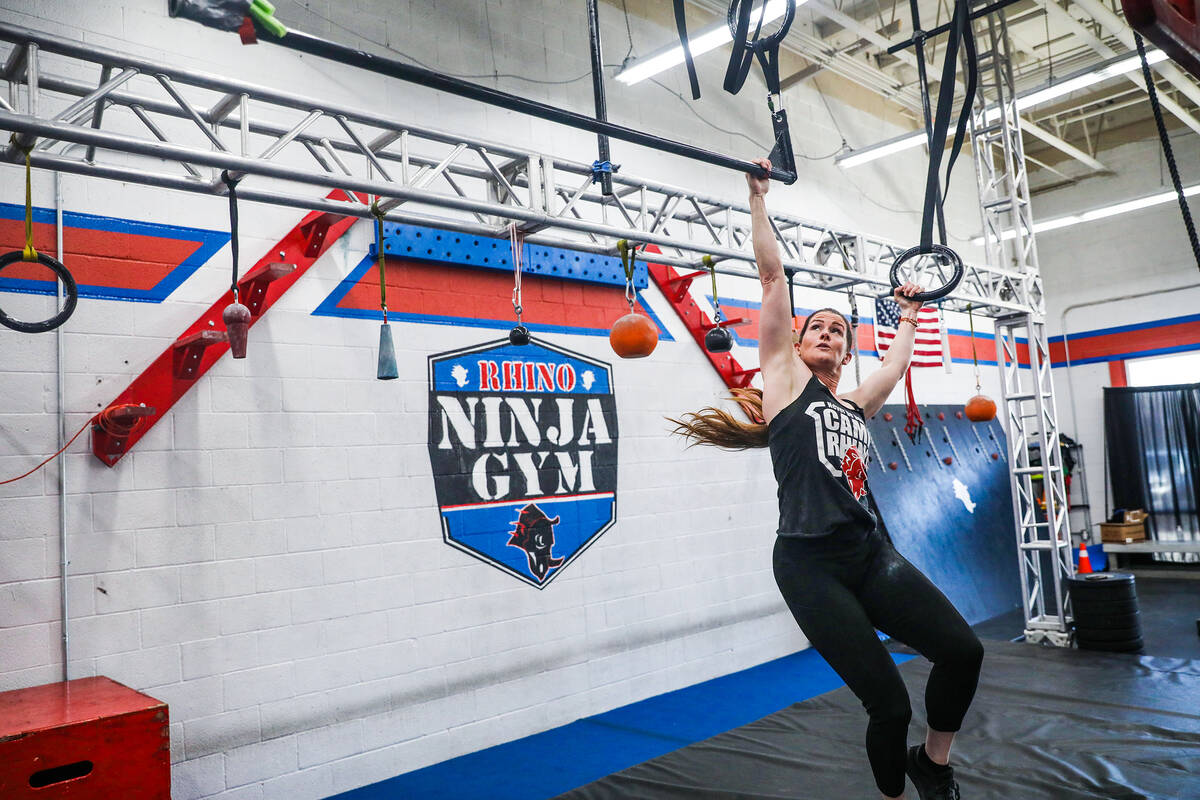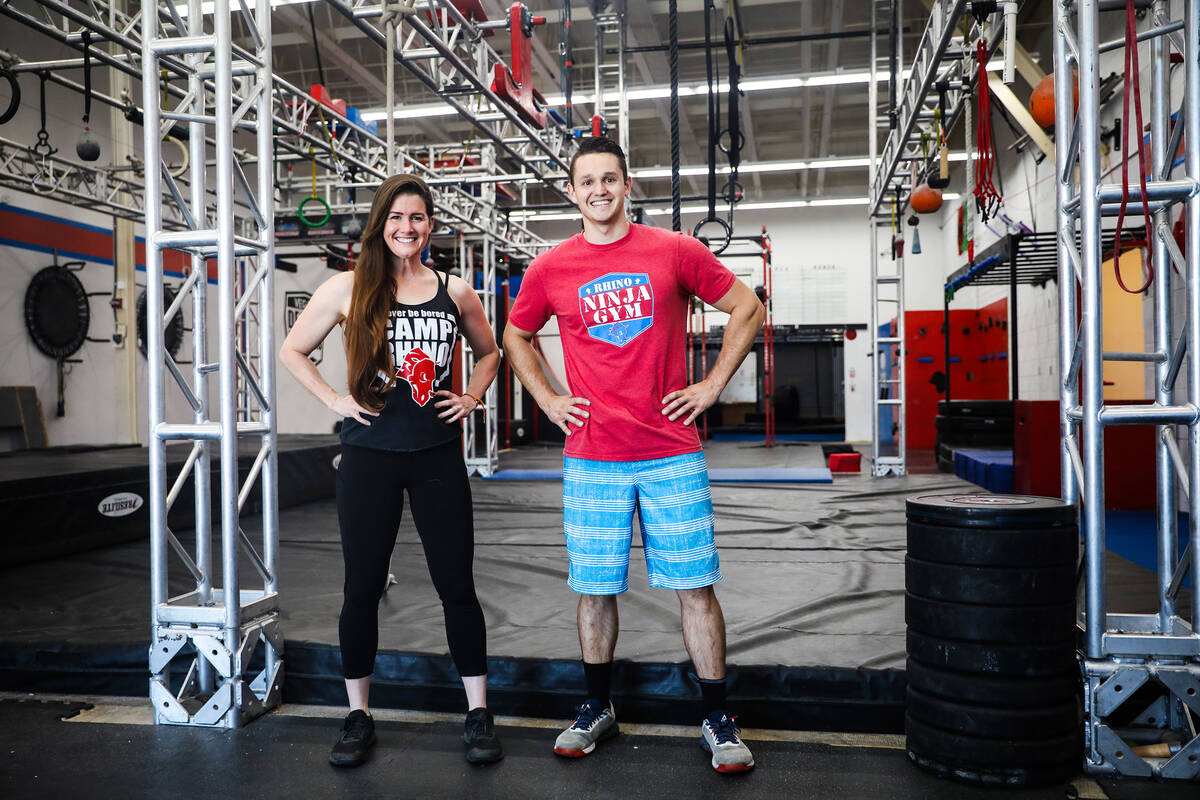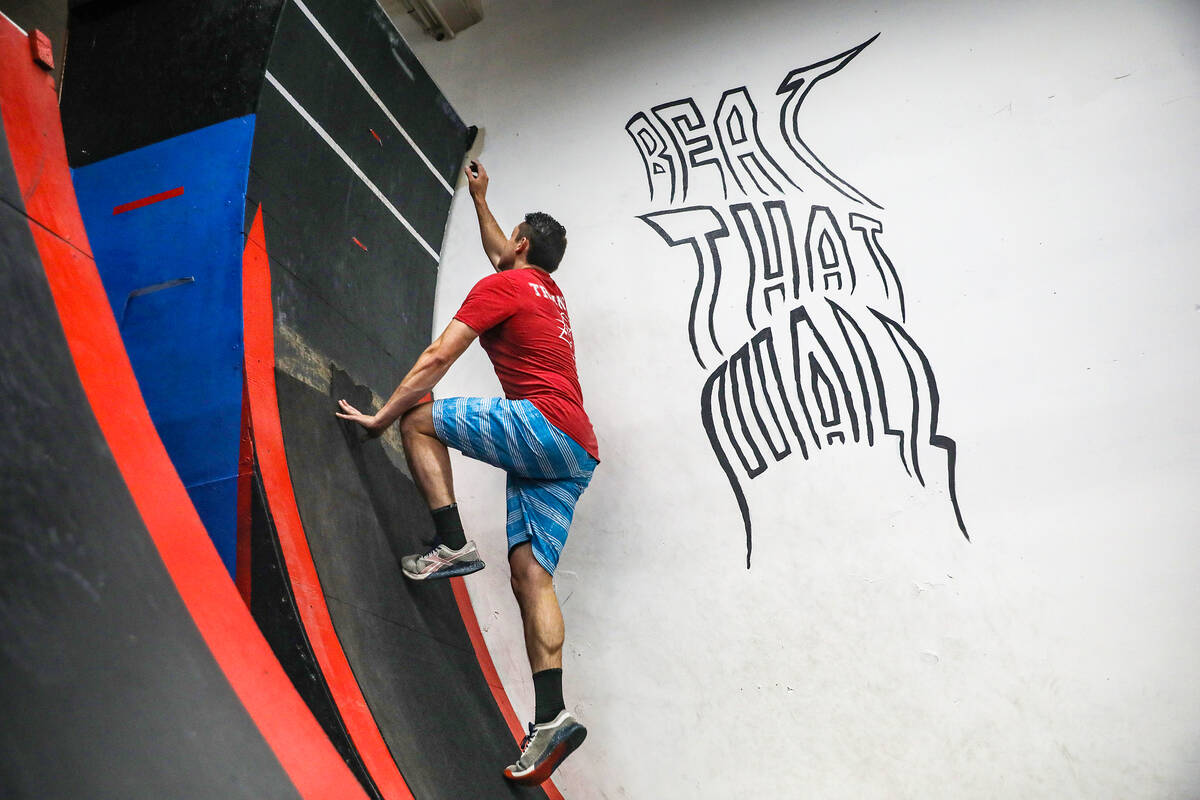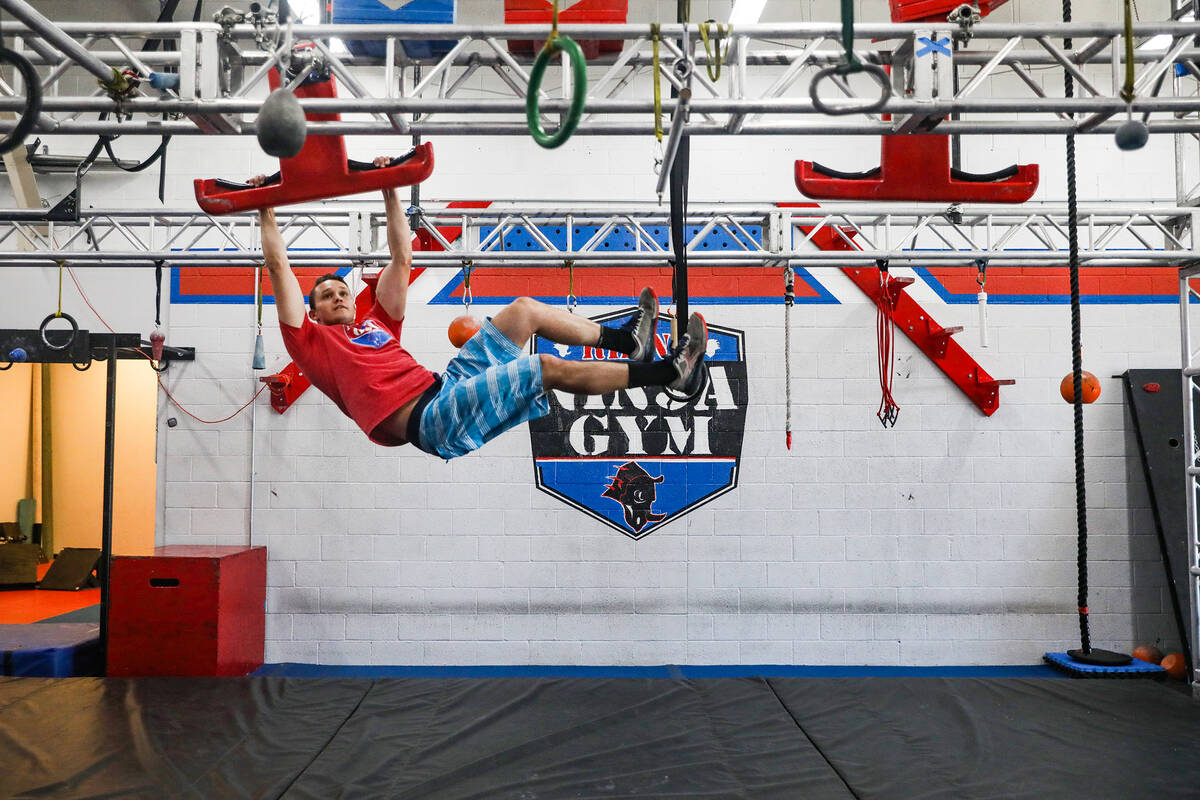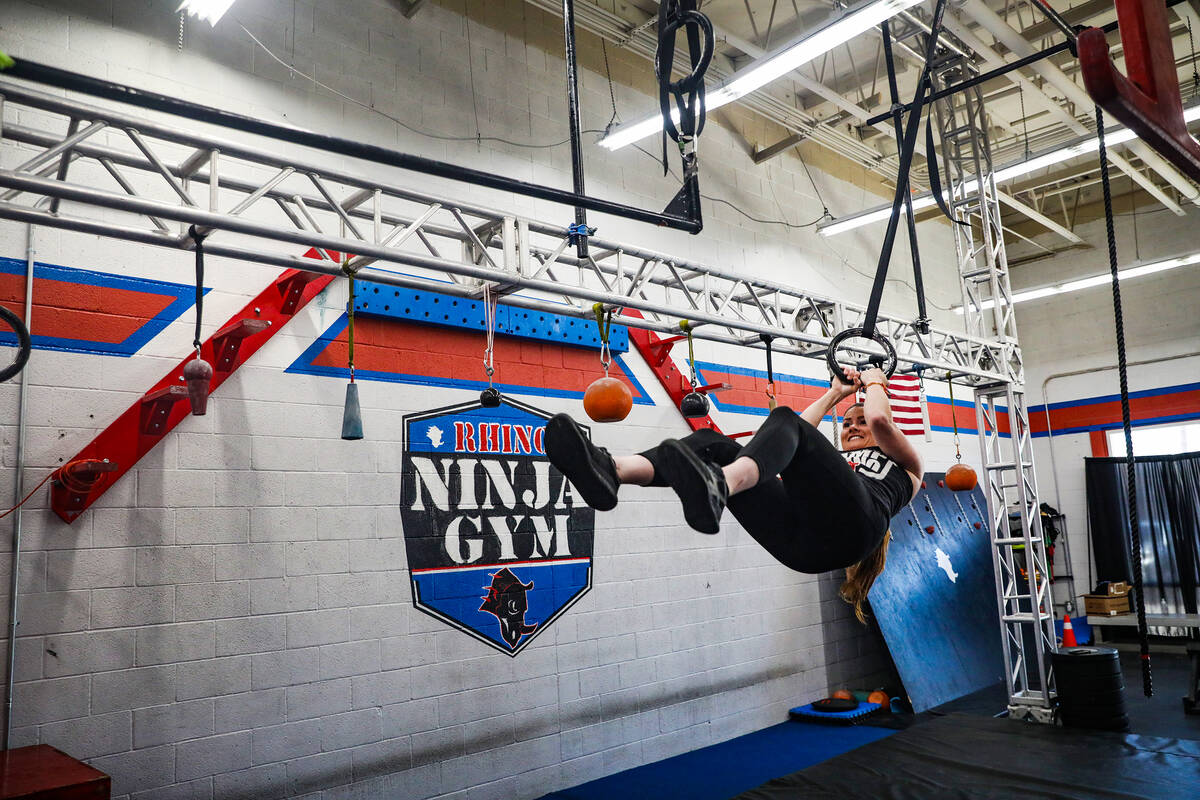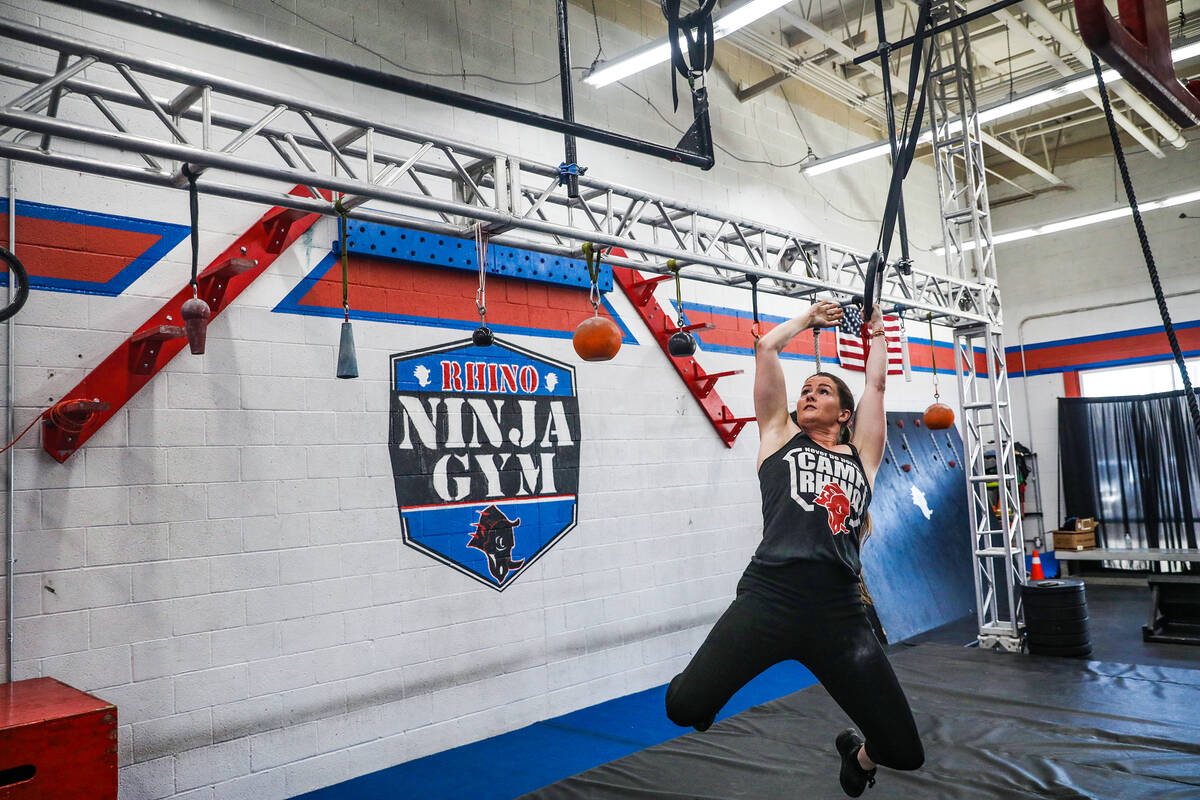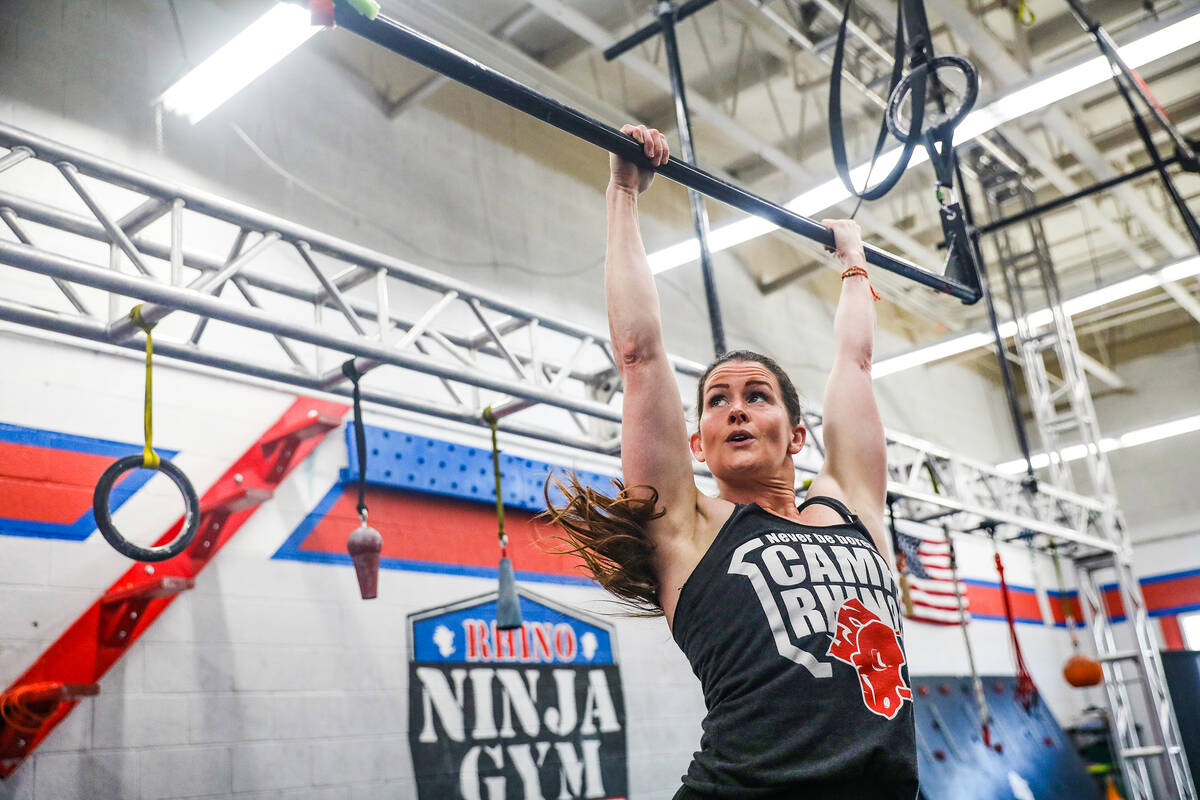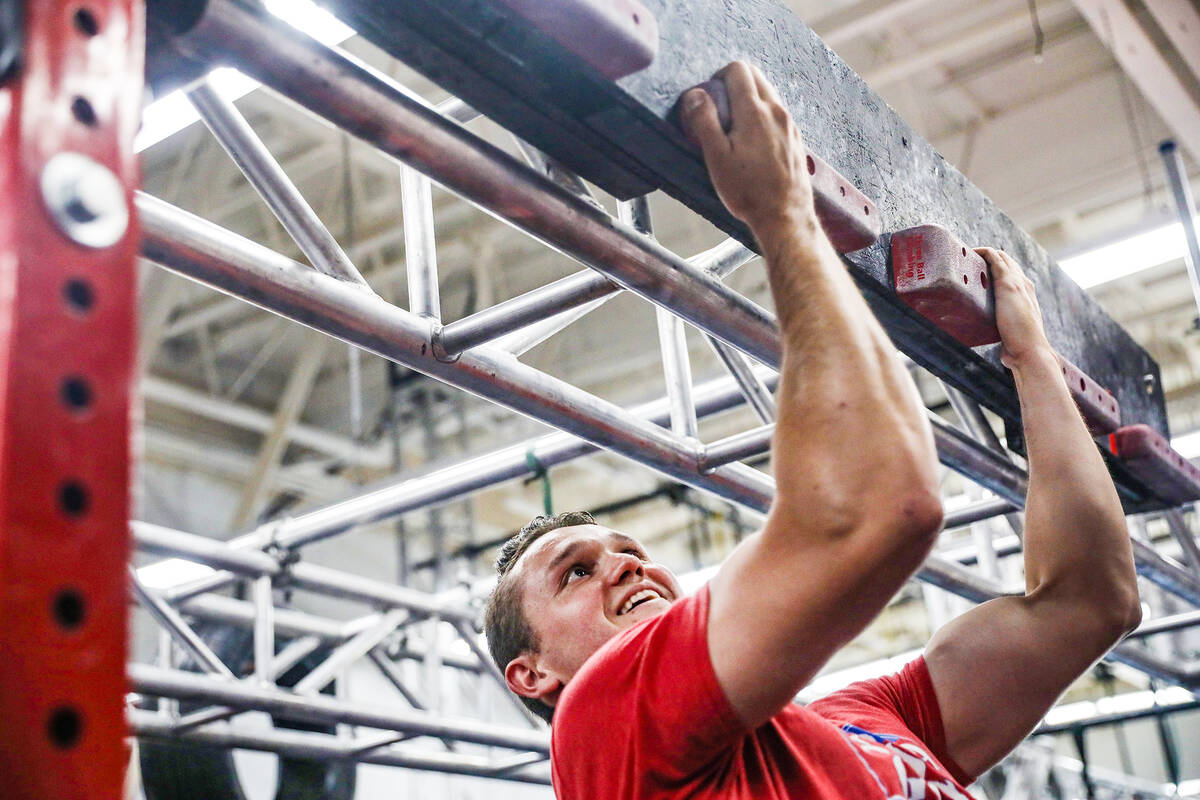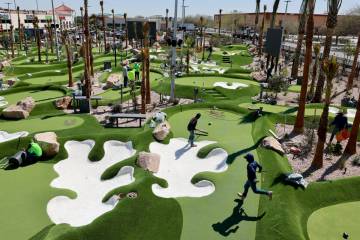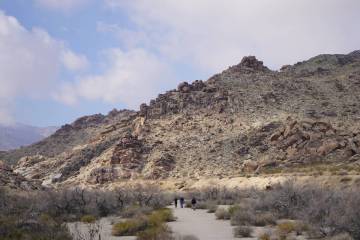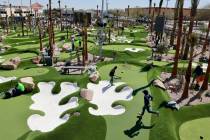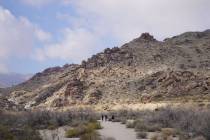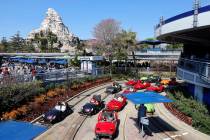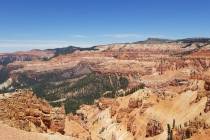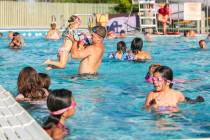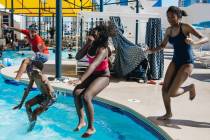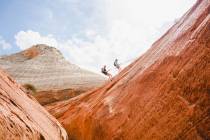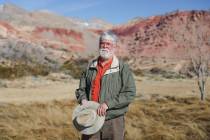Ninja warriors from around the world invade Las Vegas
“That is way harder than it looks.”
And it looks hard.
Julie Johnston is watching a man dressed in black shorts and matching T-shirt propel himself through the air horizontally as if hurling a Frisbee, arms and limbs in place of a plastic disc.
He begins on what looks like a swinging, inverted T, painted bright red and affixed to metal tubing high off the ground, and must whip his body to an identical T that’s 3 or 4 feet away.
After penduluming his torso for a few seconds to gain momentum, he pulls off the move in a feat of core strength suggestive of a dude whose abs are as well-developed as one of Hans and Franz’s biceps.
Parker Gatewood has just conquered the Wing Nut, a daunting piece of training equipment hanging from the ceiling at Johnston’s Camp Rhino Ninja Gym, a multi-room facility nestled in an east-side strip mall as if to counter the calories earned at a nearby El Pollo Loco.
Next, Gatewood tackles the Salmon Ladder, a breath-stealing lats-blaster where he has to pull himself up with a series of explosive movements using a bar to ascend a progression of rungs.
This is how you train to be a ninja warrior.
Prepare to sweat and develop a grip strength worthy of one of RoboCop’s mitts.
Gatewood is an old hand at this, having competed on the hit TV competition show “American Ninja Warrior” five years ago.
“I went down on the second obstacle,” he recalls on a recent Thursday morning. “But the experience as a whole was incredible.”
Next up: He’ll once again compete at the Ultimate Ninja Athlete Association World Series Final Championship, one of the sport’s biggest events, which runs Thursday through Saturday at Orleans Arena.
The participants will come from around the globe as ninja athlete gyms and competitions have grown into an international phenomenon.
“We started out with 26 gyms our first year. Now we’re at about 120 gyms in about 14 countries,” says Bob Clark, head of the United Ninja Athlete Association, which he founded in 2015. “Right now, we’ve got about 14 people from 14 different countries coming to this Vegas finals.”
Getting here is a grind: Over 7,000 athletes vied for a chance to participate in the event.
Only 1,500 will make the cut.
Count Gatewood among them.
A league of their own
It was more of a game show, really, as much about laughs as feats of athleticism, with gnarly wipeouts capable of eliciting groans and guffaws in equal measure.
Clark remembers watching the Japanese TV show “Sasuke” with one of his sons a decade ago, where competitors tested their mettle on a massive obstacle course complete with spinning logs and all manner of swinging doodads. (The show was repurposed as “Ninja Warrior” on the G4 network for U.S. audiences, which would later inspire the “American Ninja Warrior” TV show.)
“Me and my son would say, ‘Gosh, this would be really fun to do,’ ” Clark recalls.
Naturally, he built a ninja obstacle course in his backyard.
Turns out, this was right up Clark’s alley: He designs playgrounds for a living.
This was like the adult, ninja version of his day job.
About a month later, a ninja gym opened in his native Albuquerque, New Mexico.
Clark was hooked.
He tried to get on “American Ninja Warrior” a couple of times to no avail.
“I was like, ‘There’s got to be another way you can get into competition in this thing,’ ” he recalls. “It was a developing sport, and no one had really jumped in on standardizing it or making it any kind of competition league at all, so we started UNAA.
“I started calling gyms all over the country — there were gyms popping up all over the place seven, eight years ago,” he continues, “just reached out to them, ‘Hey, I’m trying to start a league where we have competitions all over the country.’ ”
Soon, the league was up and running. How it works: There are two qualifying rounds — area and then regional competitions — prior to the finals.
For area competitions, contestants have to rank in the top 50 percent of their age and gender categories to advance to the next round. For regionals, they have to be in the top 20 percent to qualify for the championships.
Contestants compete on a course with a minimum of 10 obstacles, judged on both time and the number of obstacles they complete — or don’t complete. During UNAA competitions, you’re allowed three misses and then you’re done.
Ninja athletic competitions are as cerebral as they are physical.
The obstacle course is different every time out. Competitors get a walk-through before the event starts, but they can’t touch anything and have to figure out on the fly — quickly — how they’re going to approach the challenges before them.
“If you’re the first person to run, you don’t get to watch anybody do anything, so in that walk-through you have to start planning everything that you think you’re going to do,” Gatewood says.
“You don’t get to test anything,” he continues. “You only get one shot.”
From parks to arenas
This all began with some buckets of water, if you think about it.
Flash back 18 years ago: Julie Johnston is not happy with the shape she’s in, nor is she pleased about hitting the local gym for workout routines that were … routine.
“I wanted to have fun with my workouts,” she explains, combining two words — “workout” and “fun” — that tend to go together like battery acid and pancakes. “I wanted to kind of join the military, just to do their boot camp, because back then there was no obstacles to play on as an adult.
“So, we built our own obstacle course,” she continues. “My family kind of helped me. We got in a park and we set things up and I called it boot camp. I started with buckets of water, because that’s all I could afford; I had that and fence posts. I’d collect cones and we’d run around cones, and we’d put a bar in between the cones and make hurdles. Then we had someone build us a portable wall. It just started building little by little.”
Johnston officially opened Las Vegas Boot Camp in 2012, which would morph into Camp Rhino Ninja Gym as the obstacles grew more elaborate and “American Ninja Warrior” helped catalyze interest in the sport.
Gatewood, a Las Vegas native who got into ninja athletics while attending Valparaiso University in Indiana, came aboard in 2019.
Nowadays, their clients range in age from 5-year-olds to near-septuagenarians, like 69-year-old Camp Rhino regular Ninja Bob.
The principles of ninja skill development revolve around balance and grip and core strength.
For newbies, the idea is to take things one monkey bar at a time.
“It’s really small steps you take,” Gatewood explains, “but the progress, you see it, because everything in here is measurable.
“If I’m hanging on a bar and I can only do it for five seconds,” he continues, “then two weeks later I’ve held for 25 seconds, you can see all those things.”
About that progress, it’s clearly being made here: Five adults and 16 kids from the Camp Rhino gym will be competing in the UNAA World Series Final Championship.
Gatewood returns to the event after finishing 35th out of over 200 competitors in his class last year.
It’s hard work getting to this point.
The key to doing so?
To not make it feel like work at all.
“You don’t want to go in a gym and just dread what you’re going to do robotically time and time again,” he says of your standard, barbell-based workout routines.
“You want it to be worth your while,” Gatewood adds. “You want to have a good time.”
And then it’s back to swinging from the rafters.
Contact Jason Bracelin at jbracelin@reviewjournal.com or 702-383-0476. Follow @JasonBracelin on Twitter and @jbracelin76 on Instagram



